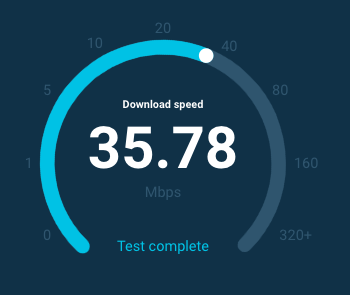Changing carriers is minimal, there are two primary ways to speed up your cell phone, air card, or mobile hotspot data: passive and active. Physically connect an external antenna to your device passively (it essentially extends your device’s internal antenna). While this may work perfectly, most people prefer to actively increase the speed of their data with a wireless speaker or booster. An amplifier is a device that electronically amplifies and transmits incoming signals from a provider. This way, your mobile device will be mobile, just as the Good Lord intended! This article focuses on actively increasing the data speed, but more importantly, determining if actively increasing the signal will also help the current data speed.

It is important to note that many factors contribute to the download/upload speed of your air card, modem or smartphone. The two I will focus on in this post are 1) the strength of the received signal on your device and 2) the capacity/performance of the cell tower.
In general, if you can increase the signal level in the environment your device is in, you will get a better download / upload speed, but this is not always the case. Your speed also depends on the capacity of your cell phone tower and the bandwidth your device is currently connected to. You may have up to 5 bars of signal strength but a poor cell tower or not equipped with maximum capacity can limit data output.
I recommend doing a site survey to see if the booster helps with your situation before purchasing any equipment.
Step 1) Take an RSSI measurement indoors and outdoors.
RSSI, or Received Signal Strength Indicator, is a decibel (dB) value that reflects the signal strength you receive from the tower. It depends on the signal “bars”, but is very accurate because a single bar can represent a very large range of signal levels. This number becomes a negative value and should be somewhere between -50 and -110. The closer to “0”, the better the signal. (-70 dB signal is better than -85 dB).
If you are using a data card or modem, the carrier software will often display this value if you hover over the signal strength indicator or if it is in the list of devices. If using a phone, you can use your favorite search engine to find out how you put your specific phone into test mode (sometimes called field test mode) and get those numbers. When using test mode, please make sure your phone is connected to the network you wish to boost.
For example if you live in a 4G LTE area, please make sure that LTE is enabled on your phone and that you are connected to a LTE tower before entering the test mode. When “LTE” is displayed next to your signal bars, you know you’re connected to an LTE-equipped tower.
Step 2) Run speed tests indoors and outdoors.
Run a speedtest cbn at multiple locations within your home and write the average results for your ping, upload and download speeds. Using the same wireless device, get out of your house or 3 miles away with a good signal and do the same test. You should do at least some tests and make sure that the results are average. If you use a smartphone as a device, SpeedTest includes apps for iOS and Android platforms.
Explanation of the results
If the initial signal inside your house is better than -80 dBm on 3G or -70 dBm on 4G, a signal booster won’t help because you’re already getting the best performance in your sign. can be submitted. Likewise, if you don’t see a noticeable increase in data speed from your “at home” speed test results and your “outside” speed test results, a signal booster is unlikely to help you because your poor performance is not related to signal level, it is related to your cell tower/carrier network .
However, if there is a significant difference between your internal and external RSSI levels and your SpeedTest results, it is likely that Signal Booster will speed up your data. How much is determined by many factors but you should at least be able to achieve as fast as you get outside your home. If your signal levels are roughly the same inside and outside your home, but you can travel up to ¼ mile and achieve a better signal and faster data, the booster still helps the outdoor antenna receive a stronger signal than the indoor antenna on your device.
Are you ready for 3G and 4G data acceleration? Check out our full selection of SureCall (formerly Mobile) and WeBoost (formerly Wilson Electronics) signal boosters for 3G, 4G and 4G LTE networks













